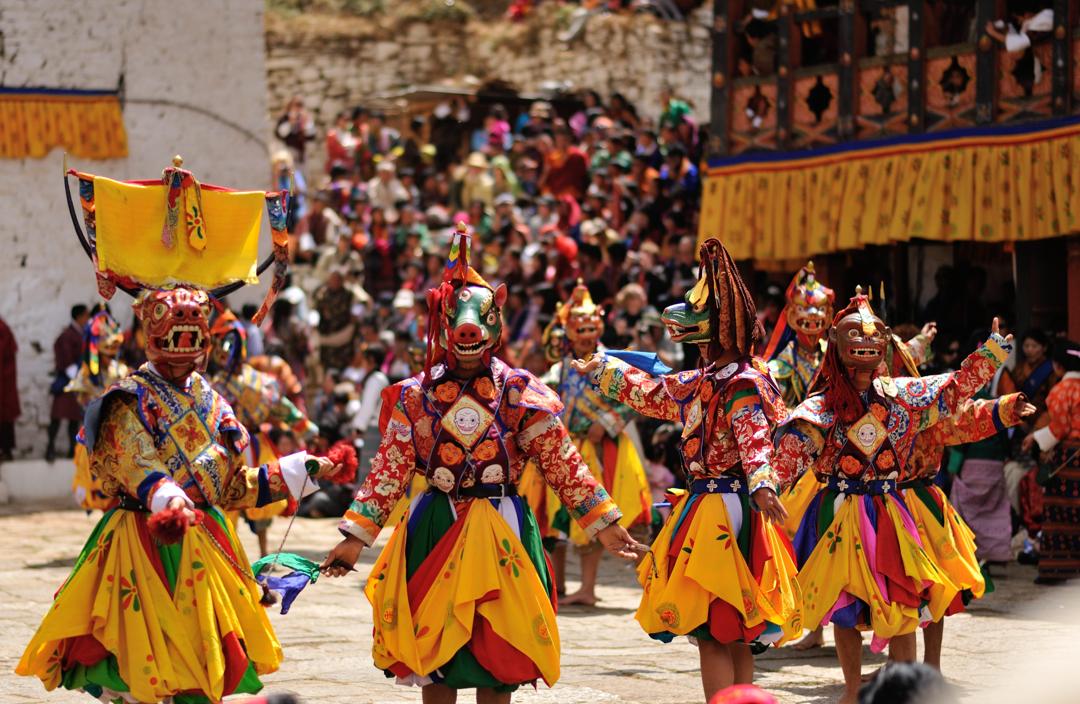![]() info@rusticfrontiers.bt
info@rusticfrontiers.bt ![]() +975 17784494/17349862
+975 17784494/17349862
ABOUT bhutan
- Home
- About Bhutan
Bhutan, the Buddhist Kingdom, is nestled in the Eastern Himalayas, bordered by China (Tibet) to the north and the Indian states of Arunachal Pradesh, Assam, West Bengal, and Sikkim to the East, South, and West.

With an area of 38,394 square km, Bhutan is similar in size and topography to Switzerland. Surrounded by the Himalayas, Bhutan remained isolated and untouched for centuries, preserving its rich Drukpa Kagyupa Mahayana Buddhist culture. With a population of about 782,455, Bhutan opened to tourism in 1974 under King Jigme Singye Wangchuck. As one of the world’s most exclusive destinations, Bhutan offers ancient monasteries, lush forests, and stunning landscapes, all while showcasing the warmth and friendliness of its people.
History

Bhutan’s history began in the 8th century with Guru Padmasambhava’s legendary flight from Tibet to Bhutan in 747 AD, which introduced Tantric Mahayana Buddhism. In the early 17th century, Zhabdrung Ngawang Namgyal unified the country under the Drukpa Kagyupa sect, establishing laws and building dzongs. In the late 19th century, Ugyen Wangchuck unified Bhutan and became its first king in 1907, establishing a hereditary monarchy. In 1998, Bhutan transitioned to a parliamentary democracy with a prime minister and a cabinet. King Jigme Khesar Namgyal Wangchuck succeeded his father in 2006, and in 2008, Bhutan moved from an absolute to a constitutional monarchy, holding its first general elections.
Religion

Bhutan is the only Mahayana Buddhist kingdom that practices Tantric Buddhism as its official religion. Most Bhutanese are Buddhist, while Nepali and Indian communities practice Hinduism. Buddhism deeply influences daily life, even in urban areas, where prayer wheels, mantras, and butter lamps are common. Bhutan’s religious sites serve as active, living spaces for the people rather than just historical landmarks.
Flora & Fauna

Bhutan’s diverse climate—ranging from foothills to high Himalayas—creates a rich natural heritage. Historically known as the “Southern Valley of Medicinal Herbs,” Bhutan is home to over 5,600 plant species, including the rare Blue Poppy, its national flower. The country is a birdwatcher’s haven with over 753 bird species, including the endangered Black-Necked Crane. Bhutan leads in environmental conservation, with over 70% of its land covered in forest and many areas designated as wildlife reserves.
Cultural Heritage

Architecture
Bhutan’s architecture is renowned for its striking features, including chortens (stupas), stone walls, temples, fortresses, mansions, and houses. The consistent traditional designs across both ancient and modern structures create a unique architectural harmony. Dzongs, the grand 17th century fortresses built without nails or drawings, are prime examples of Bhutanese architecture, adorned with rich colors and intricate patterns on walls, beams, and doors.
Arts & Crafts

Bhutanese art and crafts reflect the spiritual depth of the culture, with generations of artisans passing down their skills. Known as Zorig Chusum, the thirteen traditional art forms include woodwork, stonework, sculpture, carving, painting, blacksmithing, goldsmithing, fabric weaving, embroidery, bamboo and cane crafts, paper making, masonry, and leather work.
Events

One of the Bhutan’s main attractions is its annual religious festivals, or Tshechus, held to honor Guru Padmasambhava (Guru Rinpoche). Celebrated for several days, these festivals feature religious dances called “chham,” which fall into three categories: dramas with moral lessons, dances for purification and protection, and dances celebrating the triumph of Buddhism.
Performers, including monks and laymen, don vibrant costumes, ornate hats, and elaborate masks. A highlight is the Atsaras, or clowns, who entertain with humor and mockery, a unique feature in a culture that highly respects sacred matters. Tshechus are not only religious events but also social gatherings where people connect and showcase their success. Festivals occur throughout the year at temples, dzongs, and monasteries, offering visitors a rich cultural experience.
Gross National Happiness

In the early 1970’s, the fourth King, His Majesty Jigme Singye Wangchuck, introduced Gross National Happiness (GNH). This concept emphasizes that development encompasses more than just economic growth, focusing on the well-being of individuals and addressing their spiritual and emotional needs. GNH integrates Bhutan’s cultural and Buddhist values into its development philosophy.